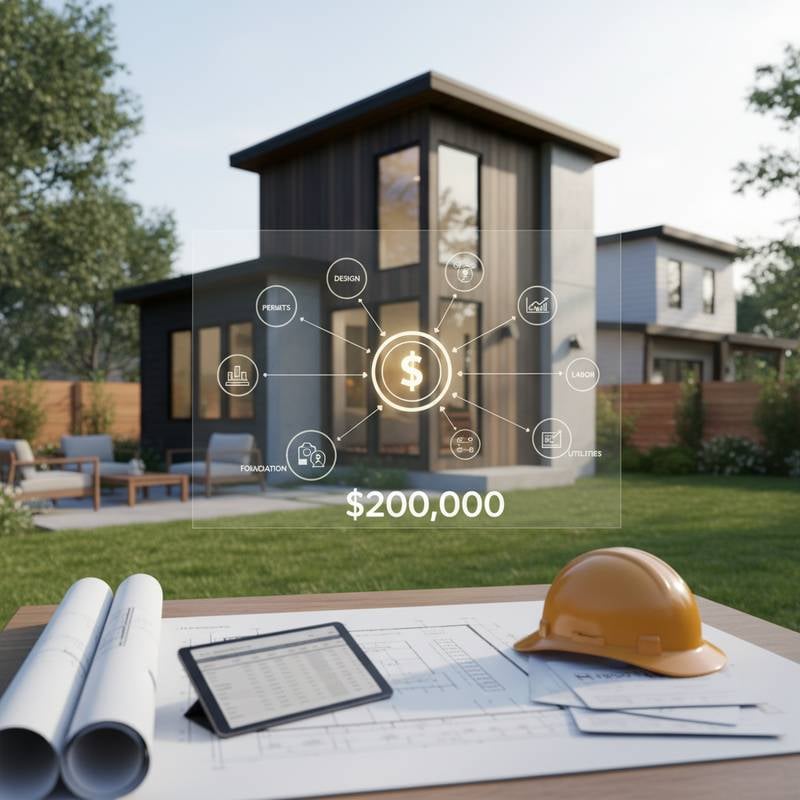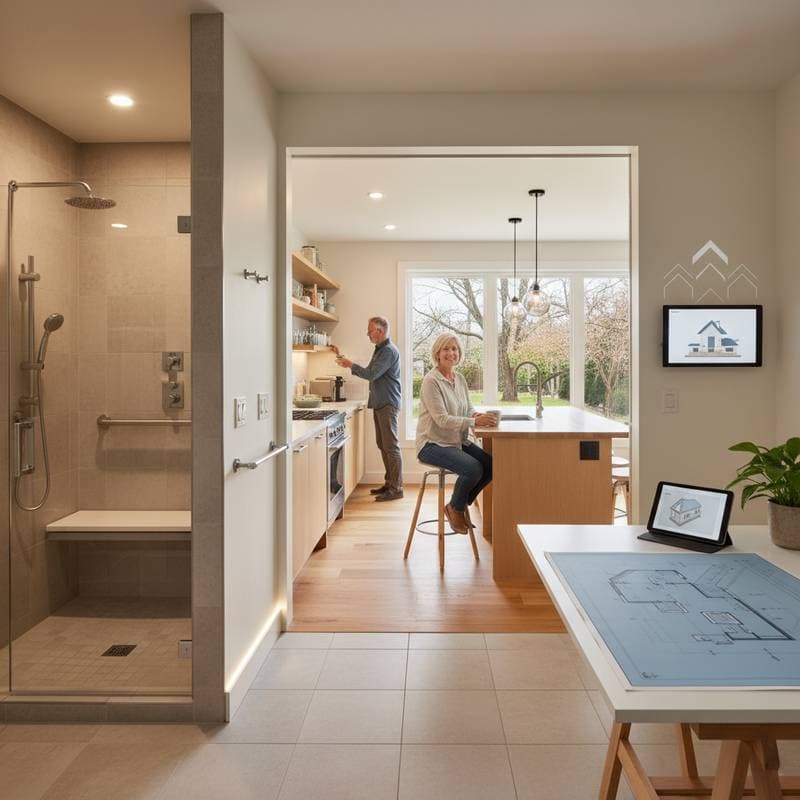Understanding Aging-in-Place Remodels in 2025
Aging-in-place remodeling transforms homes into safe, accessible environments that support independence as mobility and health needs evolve. These updates address common challenges like navigating stairs or reaching fixtures, while enhancing overall comfort. By investing thoughtfully, homeowners reduce the risk of falls and future medical expenses, and they preserve property value in an era where accessible housing appeals to diverse buyers.
This comprehensive guide details the 2025 cost landscape for such projects. It outlines key categories, average expenses, and strategies to optimize your investment. Whether you plan a single-room refresh or a whole-home overhaul, clear budgeting ensures the process aligns with your lifestyle and financial goals.
Establishing Your Total Project Budget
The overall cost for an aging-in-place remodel in 2025 ranges from $30,000 to $100,000 for a full-home transformation. Factors influencing this include the existing home structure, square footage, and regional labor rates. For instance, older homes built before 1980 often require more extensive electrical or plumbing work, pushing costs toward the higher end.
Homeowners frequently approach these projects in phases to manage expenses. Begin with priority zones like the kitchen and bathroom, where daily activities occur. This staged method allows immediate improvements in safety without overwhelming the budget, and it provides time to assess evolving needs.
To refine your estimate, calculate based on home size: expect $150 to $300 per square foot for comprehensive accessibility features. Consult local building codes early, as compliance with the Americans with Disabilities Act influences material choices and permitting fees.
Breaking Down Costs by Project Category
Bathroom Accessibility Upgrades
Bathrooms present the highest fall risks, making them a top priority. Installing grab bars, lever-handled faucets, and walk-in showers typically costs $5,000 to $15,000 per room. For example, converting a standard tub to a curbless shower involves waterproofing and slope adjustments, adding $2,000 to $4,000 in labor.
Non-slip flooring and raised toilets further enhance safety. Opt for materials like porcelain tiles with textured surfaces, which cost $10 to $20 per square foot installed. These changes not only prevent accidents but also simplify maintenance for long-term use.
Kitchen Modifications for Ease of Use
Kitchens demand adjustments for seated or standing preparation. Lowering countertops to 34 inches for wheelchair access runs $3,000 to $8,000, including custom cabinetry. Pull-out shelves and touchless faucets add $1,500 to $3,000, improving reach without major overhauls.
Appliance upgrades, such as side-by-side refrigerators or wall ovens, range from $2,000 to $5,000. These features promote independence in cooking, a key aspect of aging comfortably at home.
Entryway and Stair Solutions
Creating barrier-free entryways starts with widening doorways to 36 inches, costing $1,000 to $3,000 per opening. Ramps for single steps or porches average $2,500 to $6,000, depending on length and material; concrete options prove durable and low-maintenance.
For multi-level homes, stairlifts install for $3,000 to $7,000, while platform lifts for heavier use reach $10,000 to $20,000. Evaluate your home's layout to choose between temporary aids like modular ramps or permanent installations.
Lighting and Electrical Enhancements
Adequate lighting reduces accidents, with whole-home LED upgrades costing $2,000 to $5,000. Motion-sensor fixtures in hallways and bathrooms provide automatic illumination, priced at $50 to $150 each.
Smart home systems integrate voice-activated controls for $1,500 to $4,000, allowing remote operation of lights and locks. These technologies adapt to varying abilities, offering flexibility as needs change.
Flooring and Hallway Adjustments
Replacing carpet with hard surfaces like vinyl plank improves traction and wheel mobility, at $4 to $8 per square foot. Hallway widenings to 42 inches for clear passage cost $2,000 to $5,000 per 10-foot section.
These modifications ensure smooth transitions between rooms, minimizing obstacles that could impede daily movement.
Determining When to Hire Professionals
Certain tasks demand expert involvement to ensure safety and code compliance. Engage a certified aging-in-place specialist for structural alterations, such as removing walls for open layouts, which can cost $5,000 to $15,000 including engineering assessments.
Plumbing relocations for accessible sinks require licensed plumbers, adding $1,000 to $3,000. Electrical work, like installing dedicated circuits for medical equipment, falls under $2,000 to $6,000 when handled by qualified electricians.
Ramp or elevator installations necessitate permits and inspections, so select contractors experienced in accessibility standards. Always obtain multiple bids, review portfolios of similar projects, and confirm insurance coverage. A collaborative approach with an occupational therapist can tailor designs to specific health considerations, justifying the added $500 to $1,500 consultation fee.
Addressing Common Concerns
Defining Universal Design Principles
Universal design incorporates features usable by everyone, from children to seniors. Elements like single-lever controls and adjustable-height counters eliminate the need for later retrofits, promoting inclusivity from the outset.
Impact on Home Resale Value
Accessibility upgrades boost marketability, potentially increasing value by 5 to 10 percent in aging-friendly regions. Buyers appreciate turnkey features that avoid costly adaptations, broadening appeal in competitive markets.
Project Timeline Expectations
Minor installations, such as grab bars or lighting, complete in 1 to 3 days with minimal disruption. Larger endeavors, like full bathroom remodels, span 2 to 4 weeks, while whole-home projects extend to 2 to 3 months. Factor in material lead times, especially for custom items, to avoid delays.
Incorporating Existing Elements
Repurpose fixtures that align with guidelines, such as standard-height vanities if they accommodate knee space. This selective approach cuts costs by 20 to 30 percent, focusing replacements on essential safety upgrades.
Sustaining Long-Term Accessibility
Regular upkeep preserves the functionality of your remodel. Inspect grab bars and flooring quarterly for wear, and test smart systems annually to ensure reliability. Budget $500 to $1,000 yearly for minor tweaks, like battery replacements or software updates.
As circumstances evolve, integrate emerging technologies such as automated shades or health-monitoring sensors. These proactive steps extend the lifespan of your investment, supporting sustained independence and peace of mind.











